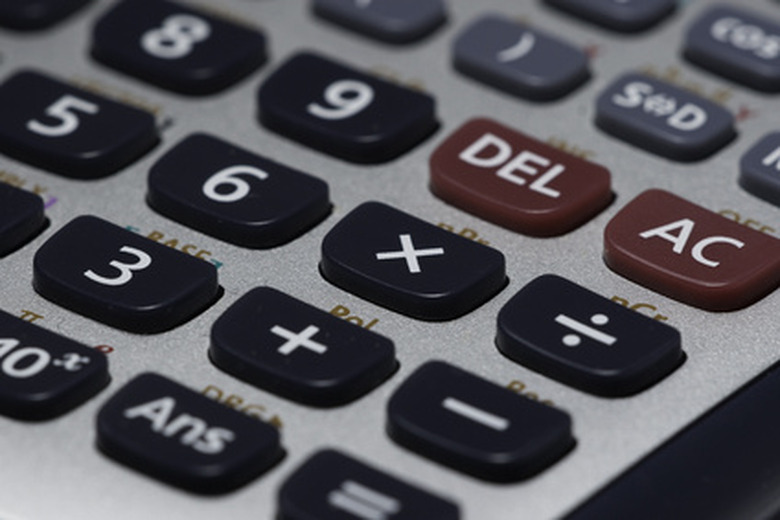How To Do Long Division Math
Long division might look intimidating, but it's just an organized way to solve larger division problems. Learners need to have mastered their basic multiplication and division facts to do long division easily. The process also involves subtraction, so it's important that concepts such as regrouping be firmly grasped. The long division process has many steps, so it is important to write them down. Placing numbers properly and lining them up beneath one another also are essential for accuracy.
Set the Problem Up Correctly
Set the Problem Up Correctly
1. Draw the long division sign on the paper by making a right-facing parenthesis ()) and adding a horizontal line to the right from the top of the parenthesis. 2. Write the number to be divided under the long division symbol. When the problem is said aloud, this is often stated first, as in "558 divided by 9." Write 558 under the symbol. 3. Write the divisor, or the number to be divided by, to the left of the division symbol. It is often the number that is stated second, as in "558 divided by 9." Write 9 to the left of the symbol.
Perform the Division
Perform the Division
1. Consider the dividend (the number beneath the division sign). Start with the leftmost digit and see if the divisor is smaller. If it is, proceed to the next step. If it is not, expand your consideration to the two leftmost digits in the dividend. Continue until the digits under consideration form a number larger than the divisor, then do the next step. For the example problem, 5 is smaller than 9, so consider 55. 2. Solve the problem formed by the digits under consideration divided by the divisor. For the example, this would be 55 / 9. Write the answer (6) on top of the division symbol above the last digit considered (the middle five in 558). This answer should always be nine or fewer. 3. Multiply the division answer digit by the divisor and write the answer under the digits under consideration. The multiplication answer must be smaller than those numbers. For the sample problem, write 54 under the two fives. 4. Subtract the multiplication answer from the number above it. The subtraction answer must be smaller than the divisor. The sample answer is one. If there are more digits in the original dividend, bring the next one straight down beside the subtraction answer. This will form the next number to be considered. In the example problem, this is 18. 5. Repeat steps two through four until no more digits remain in the original dividend to be brought down after subtraction. The problem is complete and the answer is the number on top of the division symbol.
For another example, view the video below:
Solutions for Special Cases in Division
Solutions for Special Cases in Division
1. Solve problems that are not evenly divisible by using remainders, fractions or decimals. Place the final subtraction answer with the letter R to the right of the division answer for a remainder. Use the final subtraction answer as the numerator and the divisor as the denominator to form a fraction. Add a decimal point to the answer, put a zero by the last subtraction answer, and continue dividing to form a decimal. 2. Solve problems with larger divisors by using rounding and estimation. For example, the problem 6,482 / 31 could be approached by rounding the 31 to 30 and the 6,482 to 6,500. Consider the 65, and place a 2 over the 4 in the original problem. Continue normally, estimating and rounding at each division. 3. Solve problems with a decimal fraction divisor by making the divisor a whole number. Move its decimal point to the farthest right, then add the same number of places to the right of the dividend. Divide normally after making these changes.
**TIP:** Solve problems on graph paper to aid lining up numbers correctly.
References
- "Math Matters: Understanding the Math You Teach"; Suzanne H. Chapin and Art Johnson; 2006
- "Teaching Learners Who Struggle with Mathematics: Systematic Intervention and Remediation"; Helene J. Sherman, Lloyd I. Richardson, George J. Yard; 2009
Cite This Article
MLA
Fleming, Sandy. "How To Do Long Division Math" sciencing.com, https://www.sciencing.com/do-long-division-math-7358868/. 12 November 2018.
APA
Fleming, Sandy. (2018, November 12). How To Do Long Division Math. sciencing.com. Retrieved from https://www.sciencing.com/do-long-division-math-7358868/
Chicago
Fleming, Sandy. How To Do Long Division Math last modified August 30, 2022. https://www.sciencing.com/do-long-division-math-7358868/
